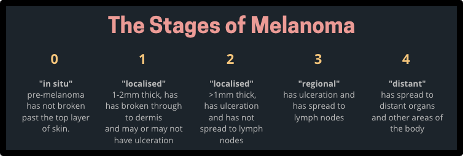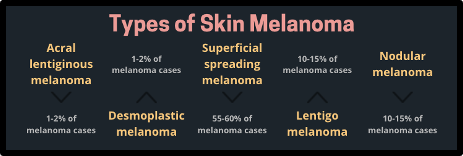Melanoma Awareness Month 2022
With Australia having the highest rates of skin cancer in the world, it seems fitting that we spend May focussing on Melanoma Awareness Month. As ‘Australia’s National Cancer’, and given the amount of sun we get in this country, it is a cause close to many of our hearts.
The Australian Cancer Research Foundation (ACRF) recognises May as a month to raise money to fund research that saves lives with Melanoma. As well as money, we raise awareness of what melanoma is and how to spot it.
The main fundraising event run by ACRF is a sponsored head shave, cut or colour. But, you can create your own sponsored event doing whatever activity you like. As well as raising money, we can all raise awareness of Melanoma – which also saves lives.
Why is melanoma so deadly?
When caught in its earliest stage, the 5-year survival rate for melanoma is 99%. That means 99% of people diagnosed with stage 1 melanoma have not been killed by the disease 5 years later – that’s a very good chance.
If, however, melanoma is not caught before it spreads to other organs, that 5-year survival rate can drop as low as 20%. That is why it’s so important for us to raise awareness as well as funds. If people know how to spot melanoma, they have more chance of beating it.
It is worth noting – as cancer.org do – that anyone diagnosed with melanoma from today onwards should expect a better outcome than those statistics show. The research funded by days like Melanoma Awareness Month is creating better and better medicine each year.
source: https://www.cancer.org/cancer/melanoma-skin-cancer/detection-diagnosis-staging/survival-rates-for-melanoma-skin-cancer-by-stage.html
What are the 4 stages of melanoma?
Stage 0: The first stage of melanoma is easiest to treat because it is localised to the outer layer of the skin. It is also called melanoma in situ, or pre-melanoma.
Stage 1: Melanoma is categorised as stage 1 if it is less than 1mm thick and has begun to ulcerate (broken the skin to create a wound). This also applies to melanoma 1-2mm thick that has not ulcerated.
Stage 2: If the wound is still contained in the initial place, but has grown to more than 2mm thick and ulcerated, it is at stage 2. This is the final stage of localised melanoma.
Stage 3: Regional melanoma that has spread to the lymph nodes, skin or tissues is categorised as stage 3.
Stage 4: The most advanced stage of melanoma. Skin cancers in this stage have spread further throughout the body, to distant organs and other body parts.
What are the types of melanoma?
As with many cancers, there is a range of melanomas. You might be surprised to learn that not all melanomas begin in the skin. Ocular melanoma is related to the eye, and mucosal melanoma affects the mucus membranes throughout the body.
These non-skin types of melanoma are extremely rare. The two rarest forms of skin melanoma are acral lentiginous melanoma and desmoplastic melanoma. These are both found in just 1-2% of melanoma cases.
The most common type – which 55-60% of diagnoses are – is superficial spreading melanoma. Other skin melanomas are nodular melanoma and lentigo melanoma, which each make up 10-15% of melanoma diagnoses.
Raising money for melanoma
Receiving a melanoma diagnosis for you or a loved one can be heartbreaking. Although it is normal to feel anxious, research initiatives like Melanoma Awareness Month are improving the chances of survival and full recovery with every year.
If you are worried about melanoma, speak to your doctor. We will focus on how to spot and avoid melanoma in the coming weeks.




